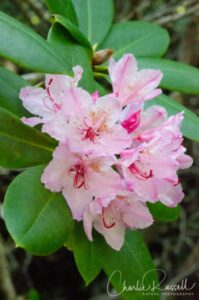
Kruse Rhododendron State Natural Reserve is nestled up against Salt Point State Park (California), and you can find a number of interesting wildflowers in addition to the Rhododendrons. We found three different species of native orchids, along with several other interesting plants.
This area was a part of a large ranch that was established in 1880. In addition to sheep ranching there was logging and tanbark harvesting operations. The reserve contains second-growth redwoods, Douglas fir, grand firs and a very large number of tanoaks, along with the Rhododendrons.
Rhododendrons tend to come into an area after a fire, and it has been a long time since there was a fire here. As the forest evolves, the tanoaks and other trees tend to shade out the Rhododendrons. This means that, if left alone, the Rhododendrons will be crowded out, and the remaining ones will have their blossoms high in the air over your head. The park service recognized this, and in 1981 they started a management program to try to thin out the tanoaks and prune the Rhododendrons to bring the flowers down to viewing level.
On this visit we were early to find many Rhododendrons in bloom (but we did!), but there were many other flowers to see, and the hike was well worth taking.
Kruse Rhododendron State Natural Reserve Wildflowers
Here’s a sample of a few of my favorites from this hike, in addition to the California rhododendron shown at the top of this post.
I’m always fascinated by wild orchids. It always surprises me when I find them “in the wild”. On this hike we found just one Fairy slipper orchid, which I wouldn’t normally expect to find this late in the year.
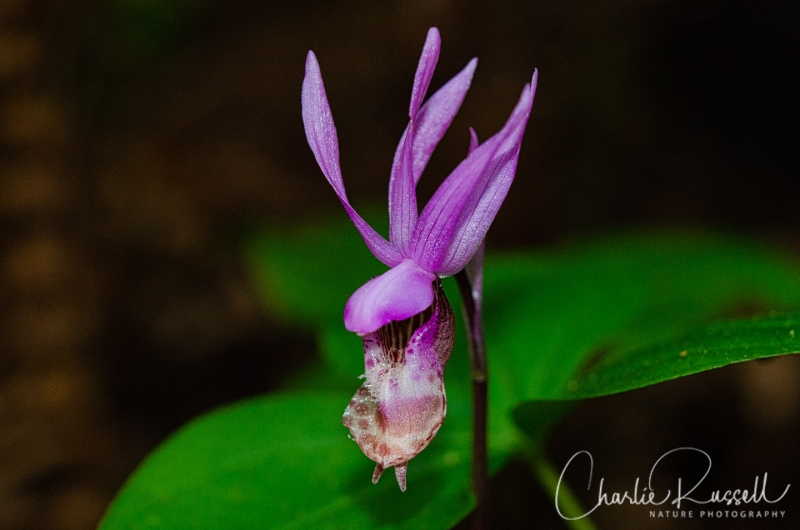
In addition, we found two different species of Coralroot orchids. These usually are easy to miss – the flowers are small, on very thin stems without leaves. On this hike, however, they were prolific! We found them at multiple locations on the trails, and sometimes the stands were quite dense. I have several photos of them, both closeups and views of the overall plant, in the gallery below.
This next one is a closeup of Spotted coralroot. Keep in mind that this flower is just a quarter-inch across.
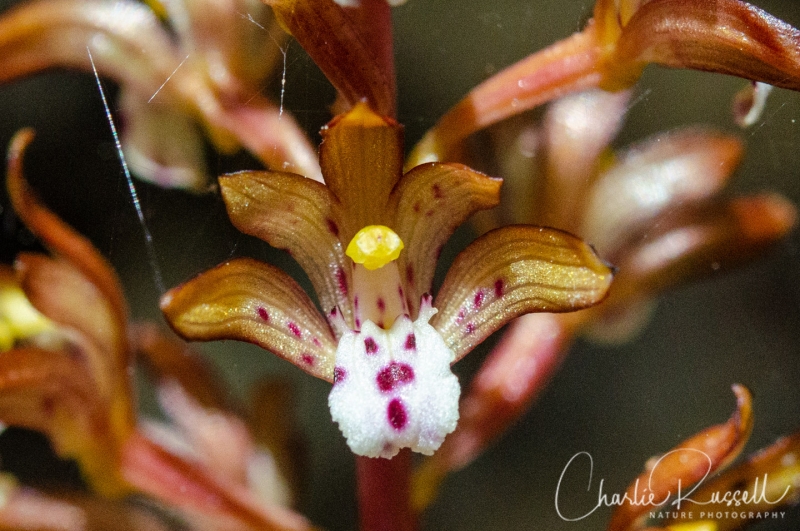
We also found Western coralroot, which I’ve not come across before.
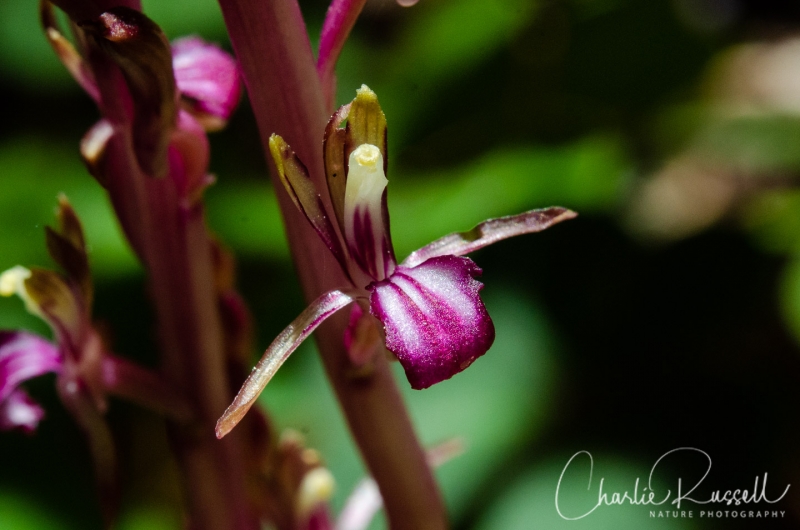
I thought that we found a third species of Coralroot, but this one ended up being a genetic variation of Western coralroot. The plant structure is identical (including a spur behind the flower), but the color is very different!
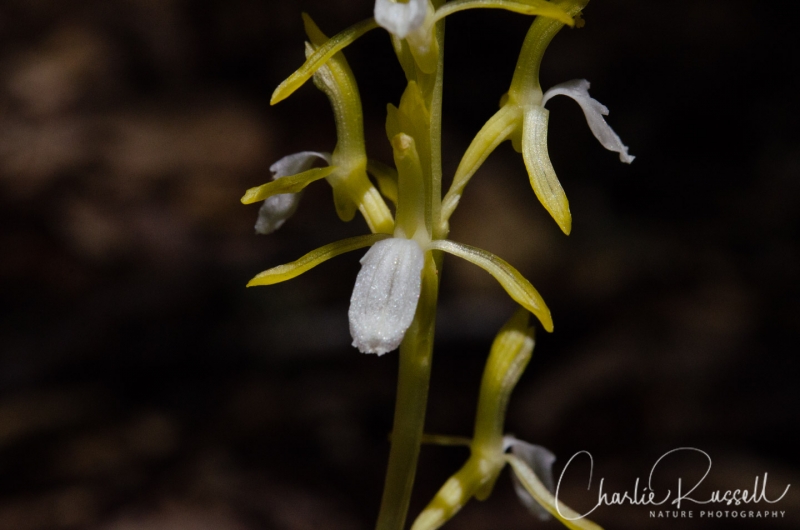
Another plant that we found in multiple locations on the hike was Andrew’s clintonia. Large heads of flowers on a tall stem.
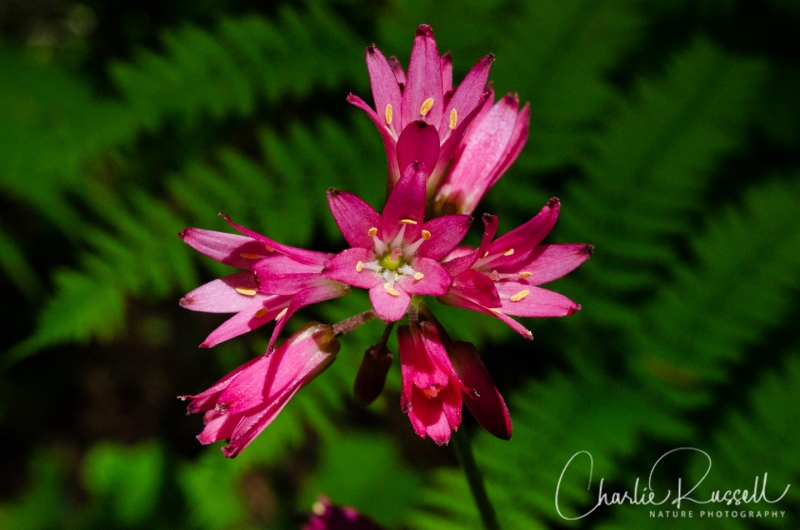
For the best viewing experience, click on the lightbox image below, and you can scroll through larger versions of the photos of many of the plants (and other things) that we found on this hike. All photos are available for purchase in a variety of formats.
The Hike
There are two main trails in Kruse Rhododendron State Natural Reserve. Each of them starts at the main parking area and runs roughly parallel to the road. They make a nice loop that is roughly 3 1/2 miles long by my GPS, if you take the right turns. The park website says this is about 2 miles, which doesn’t seem right to me. Some portions of the trails have some fairly steep inclines. Note that on my track (shown below) I do take some short little side “jaunts” to look at flowers that are off the path.
For this hike we started with the Chinese Gulch trail, which heads north from the parking area. There is a short side spur that is called the “Rhododendron loop”, but it is just a short side trip that comes back to the main trail. Almost all of the trail is shaded.
This trail eventually meets up with the road, and you will find the start of the Phillips Gulch trail just across the road. This also is shaded nicely. The only issue that I had with this hike is that there must be a branch somewhere near where one of the streams cross. We missed that, and the trail we took led us back to the road sooner than we expected. We followed the road back to our car, about a half-mile. Our path should have taken us down the gulch and back up the other side, which was a steep climb. However, the good part of this was that we found the Fairy slipper orchid on the section that led back to the road.
Here’s the track that we followed:
Kruse Rhododendron State Reserve
Profile
Click the track to see an elevation graph. Move your mouse along the elevation graph to show the location on the map. The Refresh icon will re-center the map.
Directions
The Kruse Rhododendron State Natural Reserve is adjacent to Salt Point State Park, on Highway 1 in Sonoma County, California. As you drive through Salt Point on the highway, look for Kruse Ranch Road on the east side (there are signs for the Reserve).
The trailhead is about a half-mile in from the highway on a narrow gravel road. You will see a wide spot in the road, with parking for 10 or so cars. There are pit toilets on the south side of the parking area obscured by the trees – they aren’t obvious until you walk a bit down the Phillips Gulch trail.
There is no fee for parking in Kruse itself. However, if you park in Salt Point State Park to hike on any trails there (I recommend Gerstle Cove along the bluffs) there is a fee of $8.00 per car.
Google Maps may suggest that you take the Meyers Grade Road, rather than going through Salt Point on Highway 1. This takes you to the back end of Kruse. I don’t recommend this, because the last portion (Kruse Ranch Road) is narrow, winding and a bit rough. We talked to some people who came that way, they weren’t happy with the road.
Timing is Everything
We visited on a weekday in mid-May 2018. There was no problem with parking. There were several groups of hikers on the trail.
We were early for the Rhododendrons. Just a few were blooming. However, we did find all those orchids, which don’t stay around long. The weather was perfect for a hike, and even though it was windy down by the coast, this area is fairly well protected and there was just enough of a breeze to keep things fresh. You can come earlier, there were some flowers that were finished blooming, but most people come later in May or in early June to see the Rhododendrons.
Kruse Rhododendron State Natural Reserve Wildflower Listing
Here’s a listing of the native plants that we found on this visit.
- Andrew’s clintonia (Clintonia andrewsiana)
- California huckleberry (Vaccinium ovatum)
- California rhododendron (Rhododendron macrophyllum)
- Douglas iris (Iris douglasiana)
- Fairy slipper (Calypso bulbosa var. occidentalis)
- Feathery false lily of the valley (Maianthemum racemosum)
- Gnome plant (Hemitomes congestum)
- Modesty (Whipplea modesta)
- Pacific starflower (Lysimachia latifolia)
- Redwood sorrel (Oxalis oregana)
- Redwood violet (Viola sempervirens)
- Spotted coralroot (Corallorhiza maculata)
- Western coralroot (Corallorhiza mertensiana)
- Western labrador tea (Rhododendron columbianum)
- Western thimbleberry (Rubus parviflorus)
- Western trillium (Trillium ovatum ssp. ovatum)
The following are non-native plants that we found on the hike as well:
- English daisy (Bellis perennis)
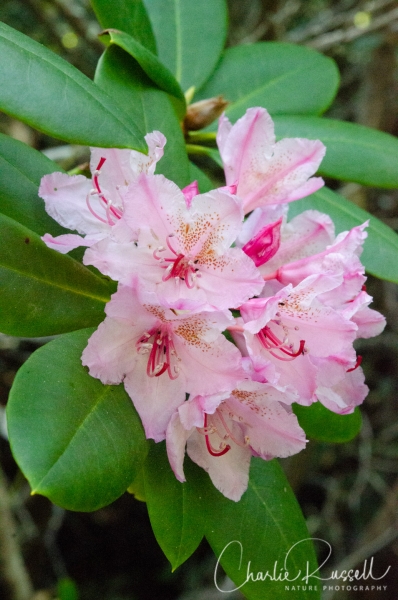
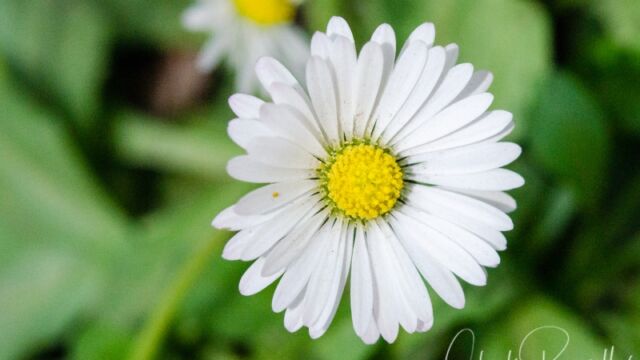

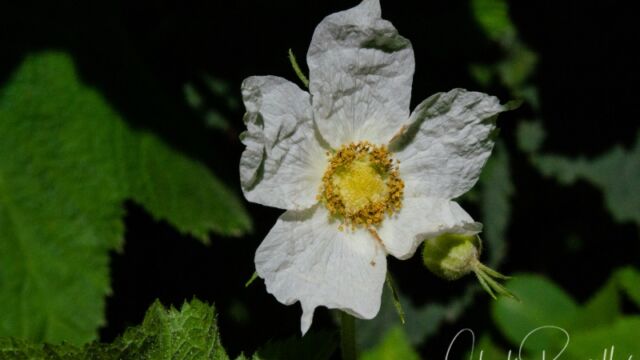
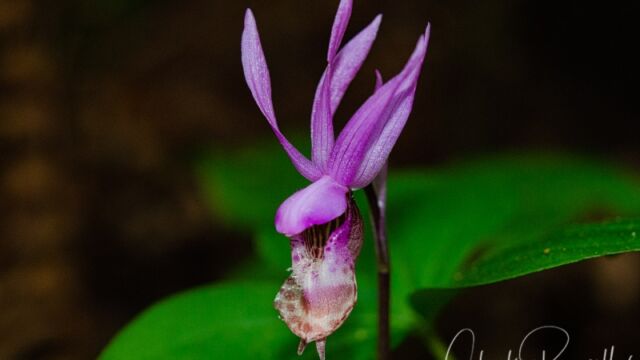
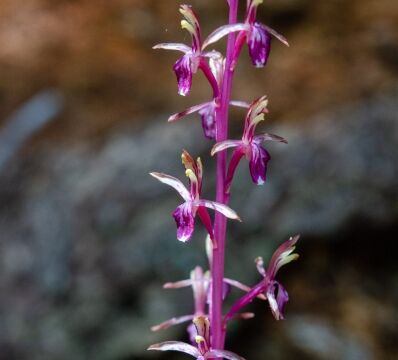
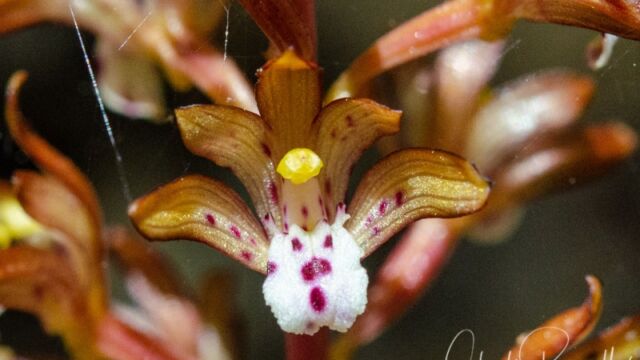
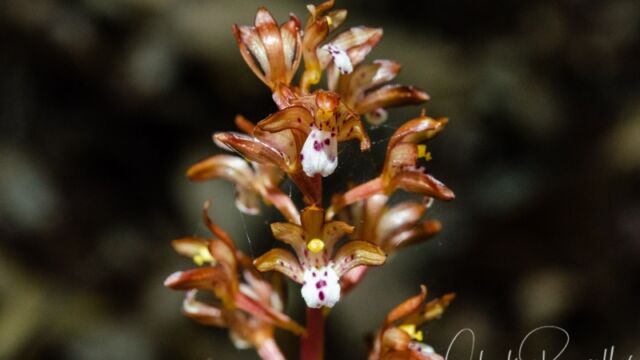
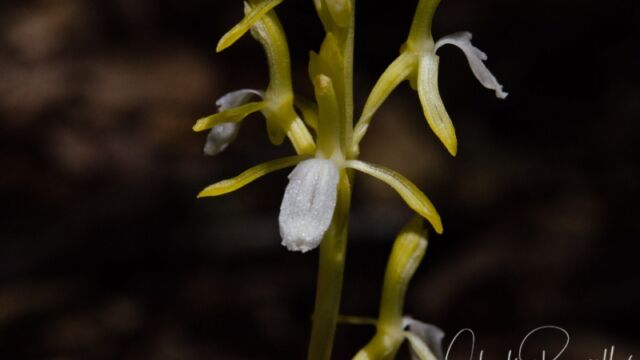
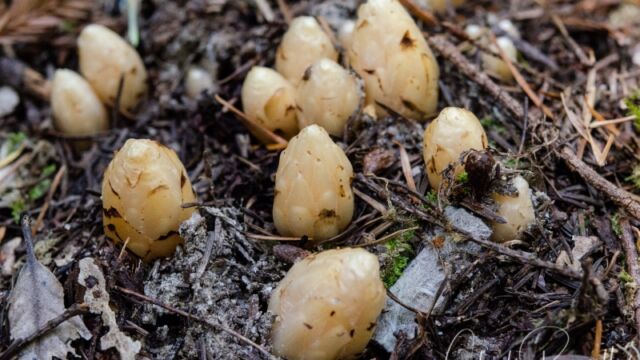
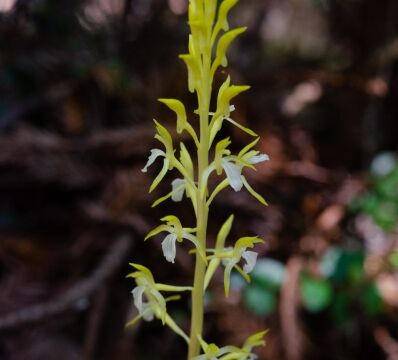
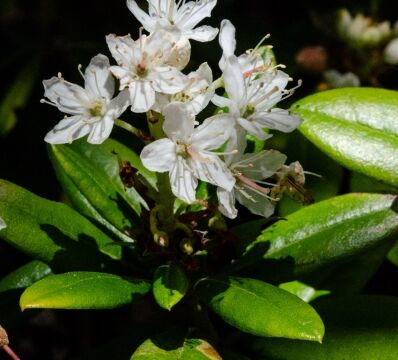
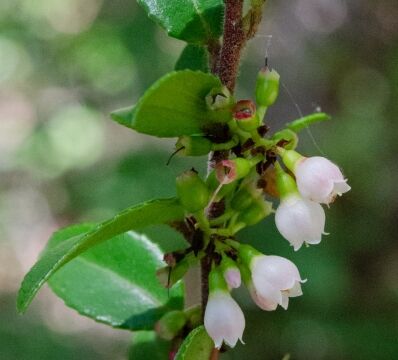
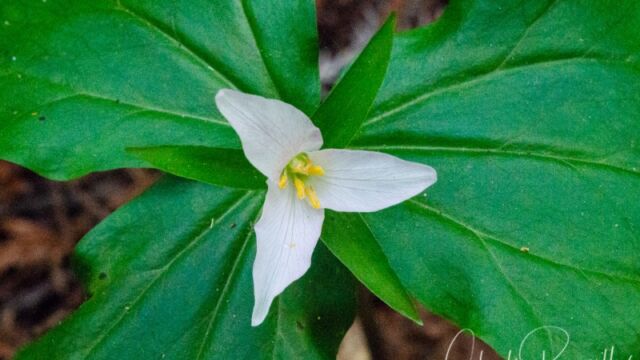
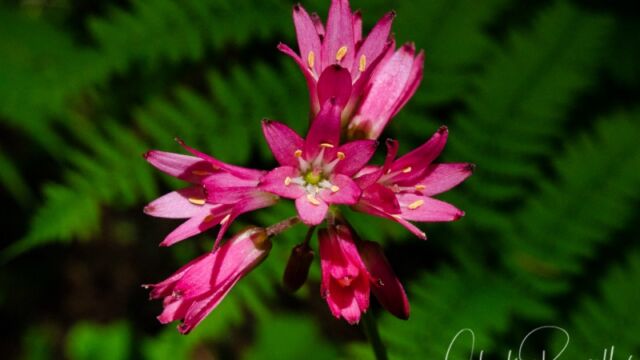
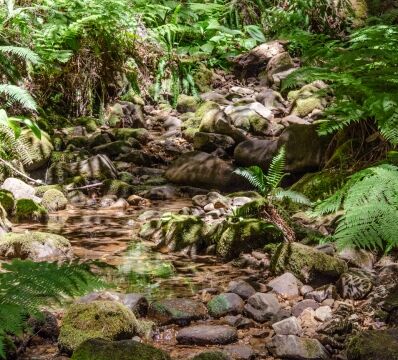


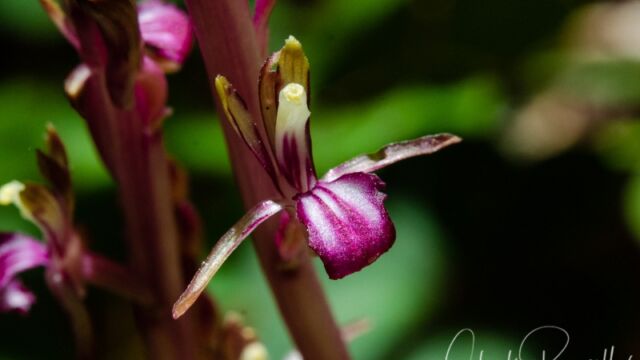
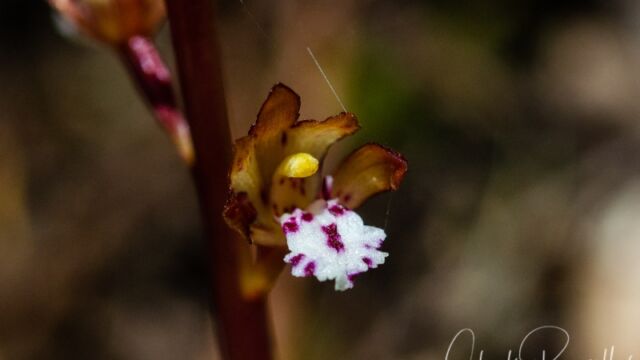
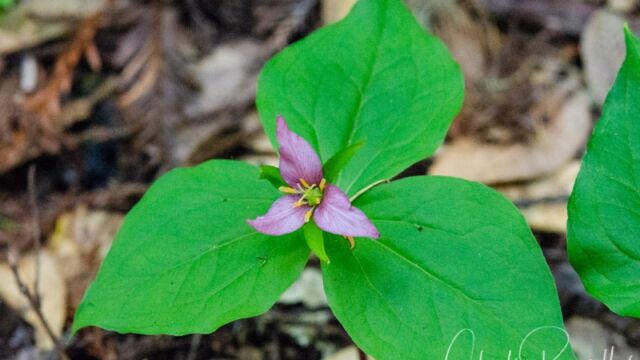

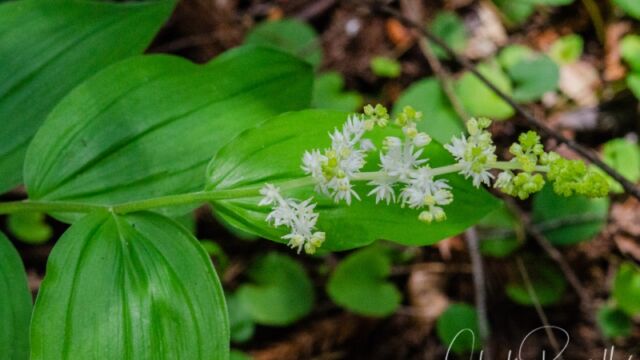
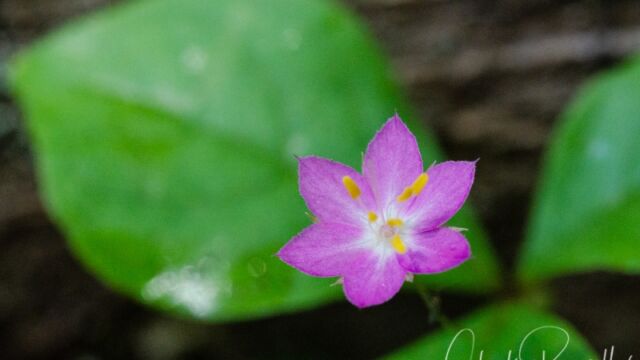

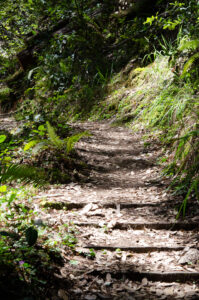
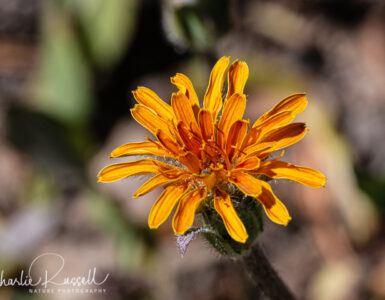
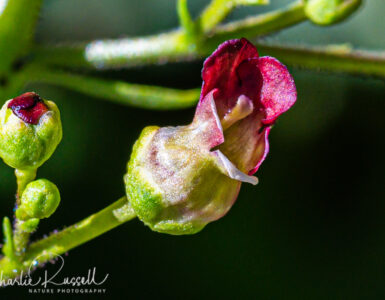
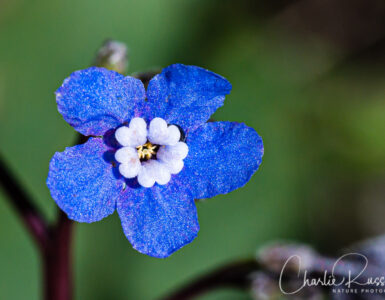
Add comment